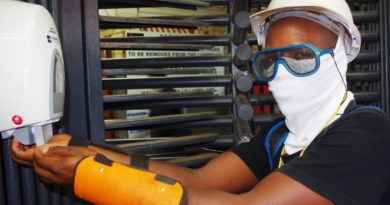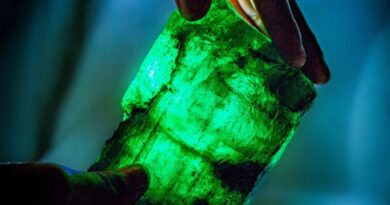Rio Tinto kept afloat by strong iron ore and bauxite
According to Rio Tinto, the global mining house delivered a strong performance, particularly in iron ore and bauxite, demonstrating the underlying resilience of its business and ability to adapt in difficult conditions.
Rio Tinto Chief Executive J-S Jacques said “Our iron ore assets are performing well in a strong pricing environment and we are on track to meet our 2020 iron ore guidance. Despite various COVID-19 related challenges, all our assets have continued to operate, with our first priority to protect the health and safety of all our employees and communities.”
“We are executing our value over volume strategy to drive performance, productivity and free cash flow per share. We will remain agile and ready to adapt to the changing operating and macro environment.”
Overall, Rio Tinto achieved a robust production performance with volumes up 1% compared with the second quarter of 2019 on a copper equivalent basis despite significant global challenges, restrictions related to COVID-19 and the impact of the earthquake at Kennecott, Utah.
Pilbara iron ore shipments of 86.7 million tonnes (100% basis) were 1% higher than the second quarter of 2019 despite the impact of COVID-19 related operational controls. With 1.7 million tonnes of port sales in the second quarter, Rio Tinto continues to grow its portside business steadily.
Production of pellets and concentrate at the Iron Ore Company of Canada (IOC) was 9% higher than the same period of 2019 with continued focus on concentrate feed to match market demand.
Bauxite production of 14.6 million tonnes, 9% higher than the second quarter of 2019, continued the first quarter trend following the successful ramp-up of Amrun in 2019, and higher production at the non-managed CBG joint venture in Guinea reflecting good progress on the ramp-up of the expansion.
Aluminium production of 0.8 million tonnes in the second quarter was 2% lower than the second quarter of 2019 primarily due to pot relining at Kitimat, the decision to operate the ISAL smelter at 85% capacity and the curtailment of the fourth pot line at the New Zealand Aluminium Smelter (NZAS) in April 2020 due to COVID-19 impacts.
On 9 July 2020, Rio Tinto announced the wind-down of operations and eventual closure of NZAS following the conclusion of the strategic review.
Second quarter mined copper was 3% lower than the same period of 2019 due to lower head grade at Kennecott. Second quarter refined copper was 67% lower than the same period of 2019 due to the impact from the 5.7 magnitude earthquake in the first quarter resulting in an unplanned flash converting furnace rebuild at Kennecott, in addition to the planned 45-day smelter shutdown in May/June.
The new Mongolia’s Oyu Tolgoi mine design announced on 3 July 2020, confirms that the caving method of mining remains valid. Rio Tinto is targeting first sustainable production between October 2022 to June 2023 and development capital of $6.6 to $7.1 billion based on the updated mine design of Panel 0.
Titanium dioxide slag production of 262 thousand tonnes was 13% lower than the second quarter of 2019 partly due to COVID-19 restrictions in Quebec and South Africa.
Capital expenditure is expected to be around $6 billion in 2020 (previously $5 to $6 billion) due to an appreciation in Rio Tinto’s major operating currencies against the US dollar since the first quarter and a reduced impact of COVID-19 on both sustaining and development expenditure.
Capital expenditure for 2021 and 2022 is expected to be around $7 billion per year (previously $6.5 billion). This includes spend from 2020 that has been re-phased as a result of COVID-19 restrictions.
Rio Tinto’s markets
In China, conditions have improved through the second quarter and appear to be stabilising. While employment and trade uncertainties remain, the construction and infrastructure sectors are performing well; house prices and stock markets are also recovering, lending support to consumer confidence.
The United States and Europe have started to re-open and recover. A second wave of infections remains a key threat for advanced economies.
China’s demand for iron ore continues while the recovery in Japan and Europe is yet to begin meaningfully and is likely to be subdued when it does.
The automotive sector is showing initial signs of recovery from a very low base, supporting demand for aluminium value-added products (VAP).
There has been limited impact on bauxite demand to date.
China’s copper concentrate market remains favourable; however, the US market is weaker. COVID-19 related supply disruptions are between 3 to 4% of annual copper supply currently, in addition to normal industry supply disruptions, and could increase further.
Rio Tinto’s production guidance remains unchanged across all commodities from the First Quarter Operations Review.




